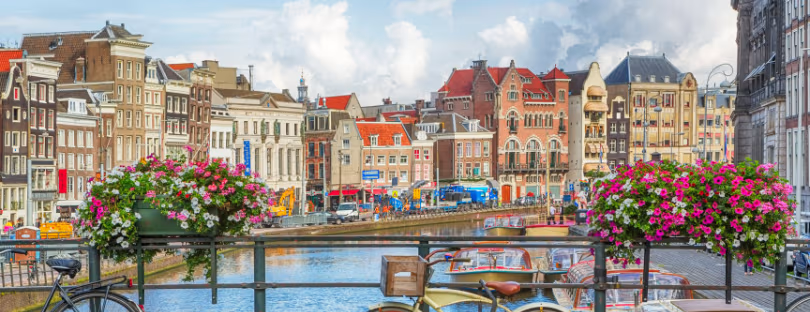
UK summer travel
The United Kingdom, a verdant tapestry woven with history, culture, and natural beauty, unveils its most enchanting allure during the summer months. From the sun-kissed shores of Cornwall to the rugged Highlands of Scotland, the UK offers an unparalleled diversity of experiences for the discerning traveler.
Let us embark on a journey through this captivating land, exploring its hidden gems, iconic landmarks, and vibrant cities.
Coastal Bliss: Where Sun, Sea, and Sand Converge
The UK’s coastline is a masterpiece of contrasts, from the dramatic cliffs of the Jurassic Coast to the serene stretches of sandy beaches in Cornwall.
- Cornwall: This sun-drenched peninsula is a haven for beach lovers, surfers, and those seeking a laid-back lifestyle. Explore the charming fishing villages of St Ives and Padstow, indulge in fresh seafood, and embark on coastal walks that offer breathtaking vistas.
- Devon: With its picturesque countryside, stunning beaches, and historic towns like Exeter and Plymouth, Devon is a perfect blend of relaxation and exploration. Discover the rugged beauty of Dartmoor National Park or unwind on the golden sands of Blackpool.
- Dorset: Home to the iconic Jurassic Coast, a UNESCO World Heritage Site, Dorset boasts dramatic cliffs, fossil-rich beaches, and charming coastal towns. Visit the historic town of Lyme Regis, explore the picturesque Lulworth Cove, or embark on a fossil-hunting adventure.
- The South Coast: From the vibrant city of Brighton to the historic port of Southampton, the South Coast offers a diverse range of experiences. Enjoy the lively atmosphere of Brighton, explore the historic docklands of Southampton, or simply relax on the beautiful beaches of Bournemouth.
Urban Escapes: A Symphony of Culture and Energy
The UK’s cities are a melting pot of cultures, history, and contemporary life. From the iconic landmarks of London to the vibrant atmosphere of Edinburgh, these urban hubs offer endless opportunities for exploration.
- London: A global metropolis with a rich history, London is a city that never sleeps. Visit iconic landmarks such as Buckingham Palace, the Tower of London, and the British Museum, indulge in world-class shopping, and experience the city’s vibrant nightlife.
- Edinburgh: The capital of Scotland, Edinburgh is a city of contrasts, with its medieval Old Town and elegant New Town. Experience the Edinburgh Festival Fringe, explore the historic castle, and immerse yourself in the city’s literary heritage.
- Manchester: A city with a rich industrial heritage, Manchester has transformed into a vibrant cultural hub. Explore the city’s music scene, visit world-class museums and art galleries, and enjoy the city’s bustling atmosphere.
- Liverpool: Known for its music heritage, Liverpool is a city with a strong maritime history. Visit the Albert Dock, explore the Beatles Story, and enjoy the city’s vibrant nightlife.
Rural Retreats: Immerse Yourself in Nature’s Beauty
The UK countryside is a haven for nature lovers, offering breathtaking landscapes, charming villages, and opportunities for outdoor adventures.
- The Cotswolds: This idyllic region is renowned for its rolling hills, picturesque villages, and stunning stone cottages. Explore charming towns like Oxford and Cheltenham, indulge in traditional afternoon tea, and enjoy leisurely walks through the countryside.
- The Lake District: A UNESCO World Heritage Site, the Lake District is a paradise for hikers, climbers, and nature enthusiasts. Explore the stunning lakes, mountains, and valleys, visit charming villages like Ambleside and Keswick, and enjoy the region’s rich literary heritage.
- The Scottish Highlands: A land of rugged beauty, the Scottish Highlands offer breathtaking landscapes, lochs, and mountains. Explore the remote wilderness, spot wildlife, and experience the magic of the Scottish Highlands.
- Yorkshire Dales: This stunning national park is characterized by rolling hills, picturesque villages, and dramatic waterfalls. Explore the charming market town of Skipton, hike through the Dales, and experience the warm hospitality of the locals.
Summer Festivals: A Celebration of Music, Art, and Culture
The UK comes alive with a vibrant festival scene during the summer months. From world-renowned music festivals to arts and culture events, there is something for everyone.
- Glastonbury Festival: The world’s largest greenfield festival, Glastonbury offers a diverse lineup of music, arts, and performances.
- Edinburgh Festival Fringe: The world’s largest arts festival, the Edinburgh Fringe features a dazzling array of theatre, comedy, dance, and music.
- The Wimbledon Championships: A prestigious tennis tournament, Wimbledon is a highlight of the British summer social calendar.
- The Brighton Festival: A vibrant celebration of arts and culture, the Brighton Festival features music, dance, theatre, and visual arts.
Culinary Delights: A Gastronomic Journey
The UK’s culinary scene has undergone a renaissance in recent years, offering a diverse range of flavors and experiences.
- Fresh Seafood: Indulge in the freshest seafood, from succulent oysters and lobster to delicious fish and chips.
- Traditional Pub Grub: Enjoy classic British dishes such as fish and chips, shepherd’s pie, and roast beef.
- Modern British Cuisine: Discover innovative and creative dishes that showcase the best of British produce.
- Afternoon Tea: Experience the quintessential British tradition of afternoon tea, with delicate sandwiches, scones, and a selection of teas.
Whether you seek adventure, relaxation, or cultural immersion, the UK has something to offer every traveler. With its stunning landscapes, vibrant cities, and rich history, the UK is a destination that will leave you with unforgettable memories.










